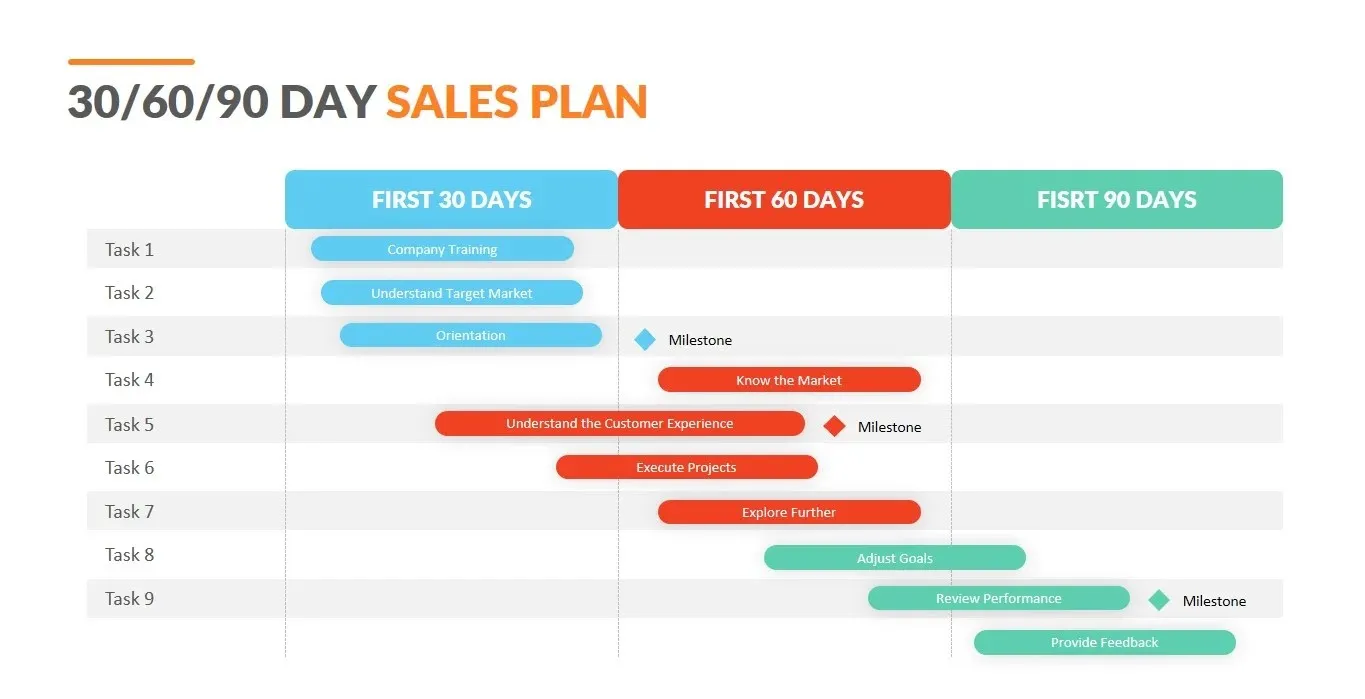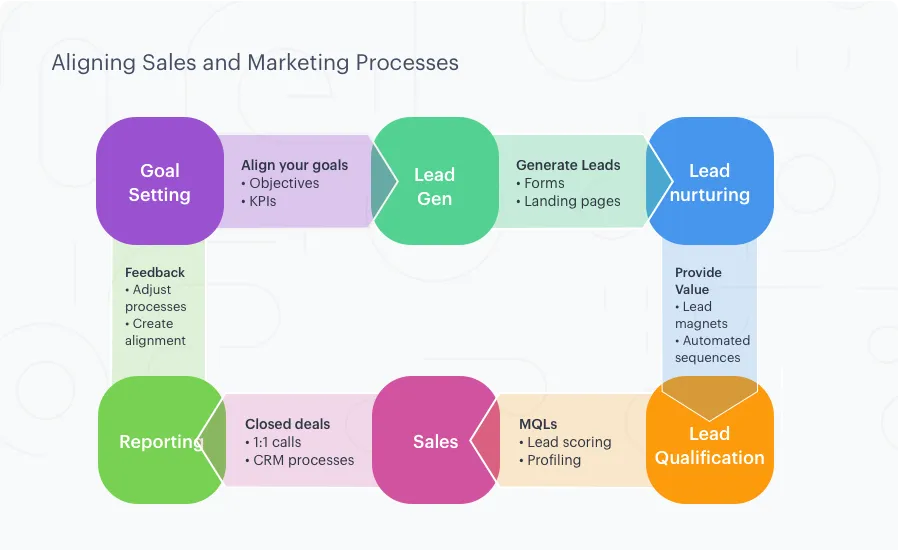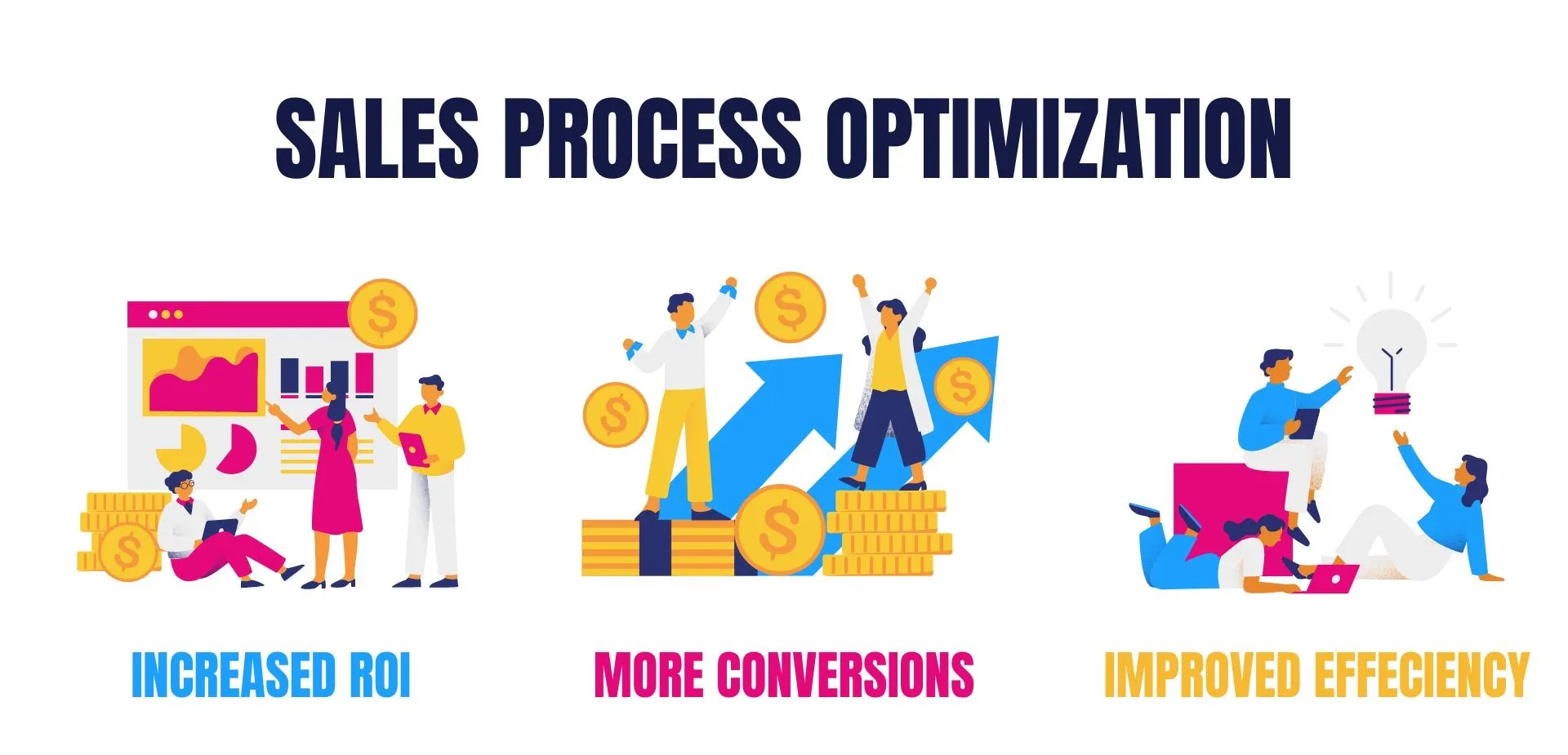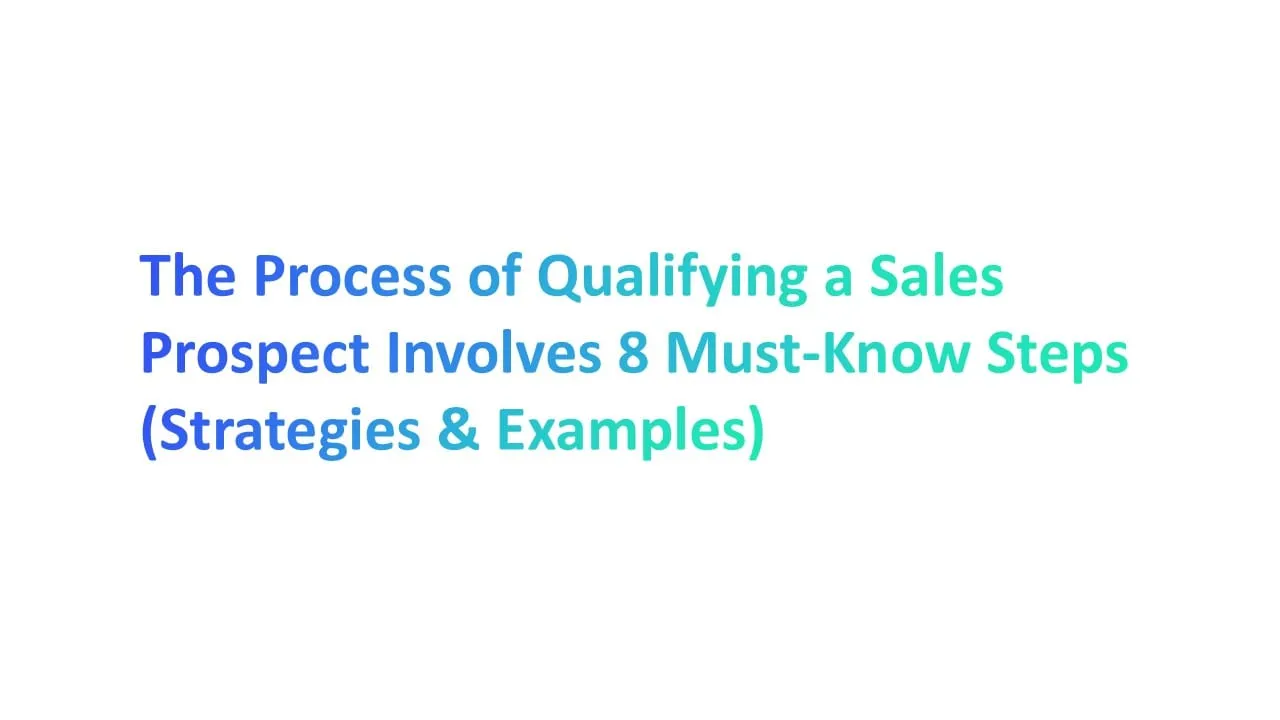Introduction to Sale Planning

What is Sales Planning
Sales planning is a strategic process that involves outlining business goals and developing a plan to achieve them through sales activities. It typically includes setting sales targets, identifying target markets, determining the strategies and tactics to reach these markets, and allocating resources effectively to achieve sales goals.
Sales planning is an important component of a business's overall strategy because it directly impacts revenue generation and growth.
The Importance of Sale Planning
Sales planning serves several critical functions within an organization, each contributing to the overall health and competitiveness of the business.
1. Strategic Direction
Sales planning sets a clear direction for the sales team and the organization as a whole. By identifying specific sales goals and strategies, it aligns the sales efforts with the broader business objectives, ensuring that every effort contributes directly to the achievement of these goals.
2. Resource Optimization
Effective sales planning allows for the optimal allocation of resources, including budget, manpower, and time. By prioritizing sales activities based on their potential return on investment, companies can ensure that resources are not wasted on low-yield efforts, thereby maximizing efficiency and profitability.
3. Market Understanding and Focus
Sales planning requires an in-depth analysis of the target market, including customer needs, preferences, and behavior. This understanding enables businesses to tailor their sales strategies to meet the market's demands effectively, increasing the chances of success.
4. Risk Management
By anticipating potential challenges and market changes, sales planning allows businesses to devise contingency strategies, thereby reducing risks associated with market volatility, competition, and economic fluctuations.
5. Performance Measurement and Adjustment
A well-structured sales plan includes specific, measurable targets, enabling businesses to track performance against these goals. This ongoing evaluation allows for real-time adjustments to strategies or tactics, ensuring that the sales team remains agile and can respond quickly to any deviations from the plan.
6. Motivation and Morale
Sales planning helps in setting clear targets and defining achievable goals, which can significantly boost the sales team's motivation and morale. Knowing precisely what is expected and having a roadmap for achieving it can inspire the team to perform at their best.
7. Competitive Advantage
A thorough and well-implemented sales plan can provide a significant competitive advantage. By understanding the market and customer needs better and having a strategic approach to sales, businesses can outperform competitors who may not be as well prepared or focused.
8. Long-term Growth
Sales planning is not just about achieving short-term targets; it's also about setting the stage for sustainable long-term growth. Through careful planning, businesses can ensure that they not only meet their current sales objectives but also build a strong foundation for future success.
Traditional Business Plan vs Modern Sales Plan
Understanding the Sales Planning Process

The sales planning process is a deliberate approach to setting sales objectives, identifying the strategies to achieve them, and allocating resources efficiently to drive sales growth. Effective business plans, while broader in scope, share the common goal of outlining a company's vision for success and the steps necessary to achieve it.
The sales planning process involves several key steps, each designed to ensure that the sales team's efforts are aligned with the company's broader objectives and market opportunities. These steps include:
1. Analyze Market and Customer Insights
Delve into market research to understand the competitive landscape, customer segments, and emerging trends. This foundation is crucial for informed decision-making.
Example: A software company conducts a competitor analysis and customer surveys to identify that businesses in the small to medium enterprise sector are seeking more customizable CRM solutions.
2. Set Clear Sales Goals
Articulate what you aim to achieve in a specific period. These goals should be specific, measurable, attainable, relevant, and time-bound (SMART) to ensure they guide your sales team effectively.
Example: Based on the insights gathered, the goal is set to increase sales of customizable CRM solutions to the SME sector by 20% in the next fiscal year.
3. Establish Key Performance Indicators (KPIs)
Choose metrics that will measure the success of your sales efforts. These indicators should reflect both short-term achievements and progress toward long-term goals.
Example: KPIs might include the number of new SME clients acquired, the average sales cycle length, and the customer retention rate after the first purchase.
4. Evaluate the Existing Sales Framework
Review your current sales processes, team capabilities, and resources. Understanding your starting point is essential for planning improvements.
Example: The company reviews its current sales process and realizes that the sales cycle for SMEs is too long due to unnecessary steps in the product demo phase.
5. Forecast Sales Outcomes
Use historical data, market analysis, and predictive modeling to project future sales. This step helps in setting realistic targets and preparing for market fluctuations.
Example: Using past sales data and current market trends, the company predicts a potential 15% increase in demand for customizable CRM solutions among SMEs over the next year.
6. Spot Opportunities and Challenges
Identify areas where your sales efforts can be optimized and recognize potential obstacles. This dual focus ensures you're ready to leverage opportunities and tackle challenges head-on.
Example: Opportunity: There’s a growing demand for cloud-based CRM solutions. Challenge: The current sales team lacks expertise in cloud computing.
7. Develop Strategic Initiatives
Brainstorm and plan new strategies or projects to address identified opportunities and challenges. These initiatives should aim to innovate your sales approach and enhance performance.
Example: To address the opportunity and challenge, the company decides to offer cloud integration services and plans to train the sales team on cloud computing benefits and sales tactics.
8. Engage with Key Stakeholders
Collaborate with individuals across different departments and levels of your organization. Their insights and buy-in are crucial for a holistic strategy and smooth execution.
Example: The sales manager organizes a series of workshops with the product development, marketing, and customer service teams to ensure everyone understands the new sales focus and how they can contribute.
9. Detail Execution Plans
Break down your strategy into actionable steps, assigning responsibilities, deadlines, and required resources. This clarity transforms strategic planning into practical action.
Example: The company outlines a plan where the sales team is divided into two groups: one focusing on direct sales to SMEs through personalized outreach and another working on generating leads through webinars on the benefits of cloud-based CRM solutions. Each team member is assigned specific targets, and a timeline is set for training completion and sales outreach start dates.
What Goals Define an Effective Business Plans
An effective business plan serves as a roadmap for a company, outlining its vision for the future and the steps necessary to achieve it.
Such a plan is essential for guiding decision-making, attracting investment, and driving growth.
Here’s a closer look at the goals that define an effective business plan, supported by data and strategic insights to ensure clarity and depth in understanding.
Establishing Clear Objectives
First and foremost, an effective business plan clearly articulates the company's objectives.
Define specific, measurable goals.
- Aim to achieve a 20% market share within the first three years of operation.
- Setting specific goals provides a clear target for the company to strive towards.
- Use market analysis to set realistic targets based on the size of the market and the competition.
Understanding the Market
A thorough understanding of the market is crucial for any business plan.
Conduct detailed market research.
- Companies that conduct regular market research grow up to 50% faster than those that don't.
- Knowing your market inside and out helps tailor your products and marketing strategies to meet customer needs.
- Utilize surveys, focus groups, and industry reports to gather comprehensive market insights.
Financial Planning
Robust financial planning underpins the viability of the business model.
Project financial performance.
- Forecast revenue to grow by 30% year-over-year for the first five years.
- Investors and stakeholders need to see potential for profitability and growth.
- Create detailed financial models based on pricing strategies, cost structures, and market demand.
Competitive Analysis
Understanding and articulating your competitive advantage is key.
Identify direct and indirect competitors.
- Knowing who you're up against helps in positioning your product or service effectively.
- Analyze competitor offerings, strengths, weaknesses, and market positioning.
Operational Plan
The operational plan outlines how the business will achieve its goals.
Detail the operational workflow.
- Implement lean manufacturing to reduce production costs by 15%.
- Efficiency in operations supports profitability and competitive pricing.
- Apply process optimization techniques and technology to streamline production.
Risk Management
Identifying and planning for potential risks ensures the business can navigate challenges.
Outline potential risks and mitigation strategies.
- If a key supplier fails, have multiple backup suppliers vetted and ready.
- Preparedness for potential challenges reduces downtime and financial impact.
- Conduct a risk analysis exercise and develop contingency plans for critical areas.
Examples of Sales Plans
1. 30-60-90-Day Sales Accelerator Plan

The 30-60-90-Day Sales Plan is designed to structure the first three months of a new sales initiative, whether it's onboarding a new sales rep, launching a product, or entering a new market. This plan is broken down into three phases, each with its own goals, activities, and outcomes:
First 30 Days: The Learning Phase
- Objectives: Understand the company’s products or services, the sales process, the customer base, and the competitive landscape.
- Activities: Training sessions, shadowing experienced team members, studying product materials, and learning the CRM system.
- Outcomes: A solid understanding of the product or service offerings, sales methodologies, and market positioning.
Next 30 Days (31-60 Days): The Integration Phase
- Objectives: Start applying learned concepts, engage with customers, and contribute to sales efforts under guidance.
- Activities: Begin outreach to potential clients, participate in sales calls and meetings with mentorship, start handling smaller deals or segments, and implement feedback received during the learning phase.
- Outcomes: Initial sales contributions, improved product knowledge, and effective integration into the sales team.
Last 30 Days (61-90 Days): The Execution Phase
- Objectives: Operate independently, achieve initial sales targets, and implement strategies to grow customer base.
- Activities: Lead sales processes, analyze performance, adjust strategies based on outcomes, and identify opportunities for growth.
- Outcomes: Meeting or exceeding initial sales targets, establishing a pipeline for future sales, and demonstrating full integration into the sales team.
2. Marketing-Alignment Sales Plan

The Marketing-Alignment Sales Plan focuses on creating synergy between sales and marketing efforts to ensure that messaging is consistent, resources are used efficiently, and goals are aligned to drive revenue growth. This plan emphasizes collaboration across departments to target the right customers effectively.
Key Components:
- Shared Goals and Objectives: Establish common targets for both sales and marketing, such as lead generation numbers, revenue targets, or market penetration rates.
- Customer Profiles and Personas: Develop detailed customer personas in collaboration with marketing to ensure that messaging, content, and sales pitches are tailored effectively to the target audience.
- Content and Messaging Strategy: Coordinate with marketing to develop sales enablement materials, case studies, testimonials, and targeted messaging that can be used throughout the sales process.
- Lead Generation and Nurturing: Implement strategies where marketing generates leads through various channels (content marketing, social media, etc.), and sales actively follows up on these leads, providing feedback to marketing on lead quality.
- Performance Metrics and Analysis: Define KPIs that reflect both sales and marketing effectiveness, such as conversion rates, lead quality scores, and ROI on marketing campaigns. Regularly review these metrics together to adjust strategies as needed.
- Communication and Feedback Loop: Establish regular meetings and communication channels between sales and marketing to share insights, feedback, and adjustments to strategies based on market responses and sales outcomes.
Outcomes:
- Improved lead quality and quantity due to targeted marketing efforts.
- Higher conversion rates as sales and marketing messages are consistent and tailored to the target audience.
- More efficient use of resources as both teams are aligned toward common goals.
- Enhanced customer journey experience from initial awareness through to purchase, driven by cohesive sales and marketing strategies.
3. Business Development Strategic Sales Plan
A Business Development Strategic Sales Plan focuses on identifying and developing new business opportunities, such as new markets, new partnerships, and new customer segments. It aims to expand the company's reach and enhance its market position through strategic initiatives and collaborations.
Key Components:
- Market Research and Analysis: Conduct in-depth analysis to identify new business opportunities, emerging markets, and potential partnership channels.
- Company Description: Details the company's core competencies, unique value proposition, and how these align with the opportunities identified for development.
- Market Analysis: In-depth research into potential markets, including size, competition, and customer needs, to identify untapped opportunities.
- Mission Statement: Clarifies the company's purpose and the strategic direction for business development.
- Business Development Strategies: Outlines specific strategies for entering new markets, forming strategic partnerships, and leveraging existing relationships to generate new business.
- Financial Projections: Includes detailed forecasts of revenue, expenses, and profitability associated with new business development activities.
- Implementation Timeline: A roadmap for executing the business development strategies, including milestones and key deliverables.
Outcomes:
- Establishment of profitable new partnerships and channels.
- Expansion into new market segments or industries.
- Increased brand visibility and market presence.
- Achievement of strategic revenue growth targets through new business development activities.
4. Global Market Expansion Sales Plan

The Market Expansion Plan is designed to guide a company through the process of entering new markets or increasing market share in existing markets. It focuses on analyzing new opportunities for growth and outlining the steps needed to capture these opportunities.
Key Components:
- Market Selection and Analysis: Identify and evaluate new markets based on size, competition, customer needs, and alignment with the company's offerings.
- Entry Strategy: Develop a market entry strategy, considering factors like direct sales, partnerships, online sales channels, or franchising.
- Product/Service Adaptation: Assess if any adaptations to the product or service are necessary to meet the specific needs or compliance requirements of the new market.
- Sales and Marketing Plan: Create targeted sales and marketing plans to generate awareness, interest, and demand in the new market.
- Infrastructure and Operations Planning: Plan for any necessary operational changes or infrastructure investments required to support market expansion, such as local offices, distribution networks, or customer support.
- Financial Statements and Projections: Provides an overview of current financial health and detailed projections on how the market expansion is expected to impact revenues and profits.
Outcomes:
- Successful entry into new markets with a clear understanding of market dynamics.
- Increased market share and customer base.
- Enhanced brand recognition and footprint in new geographical or demographic markets.
- Achievement of revenue growth and profitability targets in new markets.
5. New Product Launch Sales Plan
The New Product Sales Plan outlines the strategy for launching a new product or service to the market. It focuses on positioning, sales targets, and the tactical approach to achieving these targets.
Key Components:
- Product Overview and USP (Unique Selling Proposition) Executive Summary: Clearly define the new product, including its features, benefits, and how it differs from existing products in the market.
- Target Market and Customer Segmentation: Identify the target market for the new product, including customer demographics, behaviors, and preferences.
- Pricing and Positioning Strategy: Determine the pricing strategy and how the product will be positioned in the market relative to competitors.
- Sales Channels and Distribution: Select the most effective sales channels and distribution methods to reach the target market quickly and efficiently.
- Marketing and Promotion Plan: Develop a comprehensive marketing and promotion plan to generate excitement and awareness about the new product.
Outcomes:
- Successful launch and adoption of the new product in the target market.
- Achievement of initial sales targets and market penetration goals.
- Positive customer feedback and strong demand for the new product.
- Establishment of a foundation for long-term sales growth for the new product.
How to Implement Your Sales Planning
Implementing your sales planning effectively requires a strategic approach that aligns with your overall business objectives.
It involves translating your sales plan into actionable steps, ensuring your team is equipped and ready to execute, and setting up a system for monitoring progress and outcomes. Here’s how to proceed:
1. Align Sales Planning with Your Business Plan
Ensure that your sales plan supports the broader goals outlined in your business plan. This alignment guarantees that your sales efforts contribute directly to the company's growth and success.
2. Use a Business Plan Template
Starting with a business plan template can help structure your sales planning process. It ensures all critical aspects of your sales strategy are considered, including market analysis, sales targets, strategies, and resource allocation.
3. Incorporate Elements from Traditional and Lean Business Plans
Draw from both traditional business plans and lean business plans to create a balanced sales plan. Traditional plans provide depth and detail, while lean plans offer flexibility and adaptability. This combination ensures your sales plan is both comprehensive and agile.
4. Translate Your Business Idea into Sales Tactics
Every successful sales plan is rooted in a compelling business idea. Clearly define how your products or services address specific customer needs or market gaps, and use this insight to inform your sales tactics and messaging.
5. Equip Your Team
Provide your sales team with the necessary tools, resources, and training to implement the sales plan effectively. This might include sales scripts, product training, CRM systems, and access to analytics tools.
6. Monitor and Adjust
Implement a system for tracking sales performance against your plan’s objectives. Use KPIs to measure progress, and be prepared to adjust your strategies based on real-world performance and feedback.
How to Optimize Sales Plan Process

Optimizing your sales plan process involves refining your strategy and execution to improve efficiency, effectiveness, and outcomes. Here’s how to enhance your sales plan process:
1. Review and Update Regularly
The market and your customers’ needs can change rapidly, so write a business plan accordinly. Regularly review and update your sales plan to reflect these changes, ensuring your strategies remain relevant and effective.
2. Integrate Customer Feedback
Actively seek and incorporate feedback from your customers into your sales plan. This can help you fine-tune your approach, improve customer satisfaction, and identify new sales opportunities.
Leverage Data Analytics
Use data analytics to gain insights into customer behavior, sales performance, and market trends. This information can help you make informed decisions about where to focus your sales efforts for the greatest impact.
Streamline with Technology
Utilize technology to streamline your sales processes. CRM software, automation tools, and digital marketing platforms can increase efficiency, reduce manual effort, and enhance customer engagement.
Foster Collaboration Across Teams
Encourage collaboration between your sales, marketing, product development, and customer service teams. A unified approach ensures a seamless customer experience and maximizes the effectiveness of your sales strategies.
Focus on Continuous Improvement
Adopt a mindset of continuous improvement. Encourage your team to experiment with new sales tactics, learn from successes and failures, and constantly look for ways to improve the sales process.
How Integrating Business Plans, Traditional Strategies, and Marketing Strategies Can Increase Your Sales

Integrating business plans, traditional strategies, and marketing strategies is a holistic approach that can significantly increase sales.
This integration ensures that all aspects of the business are aligned towards a common goal of growth and customer satisfaction. Here’s how blending these elements can enhance your sales efforts:
1. Unified Direction
- Alignment: Integrating these strategies ensures that your business goals, operational strategies, and marketing efforts are all aligned. This coherence ensures that every part of your business is working towards the same objectives, making your efforts more efficient and effective.
2. Enhanced Brand Consistency
- Brand Image: A unified strategy enhances brand consistency across all touchpoints. Consistent messaging across traditional and digital marketing channels reinforces your brand identity, making it more recognizable and trusted by consumers.
3. Optimized Resource Allocation
- Efficiency: By integrating your strategies, you can optimize resource allocation. Understanding where your marketing efforts overlap with your traditional strategies allows you to allocate your budget more efficiently, ensuring the best return on investment.
4. Improved Customer Insights
- Data Integration: Leveraging data from both traditional and digital strategies offers a more comprehensive view of your customer base. This integrated insight can lead to more effective targeting and personalization, enhancing customer engagement and ultimately boosting sales.
5. Increased Agility
- Flexibility: An integrated approach allows for greater flexibility and agility in your business operations and marketing efforts. You can quickly adapt to market changes, customer feedback, and emerging trends, keeping your business competitive and responsive.
6. Leveraging Synergies
- Cross-Promotion: Integrating business and marketing strategies allows for cross-promotional opportunities. For example, a traditional event like a product launch can be amplified through digital marketing channels, expanding its reach and impact.
7. Enhanced Customer Experience
- Cohesive Experience: A seamless integration ensures that customers have a consistent and cohesive experience with your brand, regardless of the channel. This consistency can improve customer satisfaction and loyalty, leading to repeat sales and referrals.
8. Strategic Decision Making
- Informed Decisions: With a comprehensive view of your business's strategic direction, marketing efforts, and market response, you can make more informed decisions. This strategic advantage can help in identifying new opportunities, optimizing product offerings, and enhancing your market position.
Implementation Steps:
Strategic Review: Conduct a thorough review of your current business, traditional strategies, and marketing strategies to identify areas of alignment and divergence.
Stakeholder Engagement: Engage with key stakeholders from each area to understand their perspectives and to ensure buy-in for an integrated approach.
Goal Setting: Define clear, measurable goals that reflect the integrated strategy’s objectives.
Plan Development: Develop a comprehensive plan that outlines how each element of the strategy will contribute to the overall goals.
Execution and Monitoring: Implement the plan with a focus on flexibility and adaptability, and establish KPIs to monitor progress and effectiveness.
Key Strategies and Approaches for Creating Your Sales Plan

To create a distinctive sales plan that stands apart from the general understanding of the sales process, it's crucial to delve into specific strategies and approaches that focus on execution, innovation, and adaptation.
Here are key strategies and approaches for constructing a sales strategy
1. Emphasize Solution Selling
- Tailor Solutions to Customer Needs: Move beyond selling products or services; focus on selling solutions that address specific customer pain points. Use data analytics to understand customer challenges and develop tailored solutions.
2. Leverage Data-Driven Decision Making
- Utilize Analytics for Targeting and Personalization: Implement advanced analytics to segment your market and personalize your sales approaches. Analyzing customer data helps in predicting buying behaviors and tailoring communications accordingly.
3. Integrate Technological Tools
- Adopt Sales Automation and AI: Streamline your sales process with automation tools that take over repetitive tasks, freeing up your sales team to focus on building relationships. Use AI for predictive analytics, lead scoring, and personalized customer interactions.
4. Develop a Culture of Continuous Learning
- Implement Agile Sales Methodologies: Adopt principles from agile methodologies to make your sales process more responsive and adaptable. This includes regular sprint reviews, where strategies are evaluated and iterated upon based on their success or failure.
5. Strengthen Customer Relationships
- Prioritize Customer Success: Develop a customer success strategy that ensures customers achieve their desired outcomes using your product or service. This involves regular follow-ups, training sessions for customers, and proactive support.
6. Optimize Sales Channels
- Channel Diversification: Evaluate the effectiveness of your current sales channels and explore new ones to expand your reach. This could mean enhancing your e-commerce platform, exploring B2B marketplaces, or establishing strategic partnerships.
7. Enhance Collaboration Between Teams
- Sales and Marketing Alignment: Ensure your sales and marketing teams are closely aligned with shared goals and regular communication. Use shared tools and platforms to ensure both teams have access to the same data and insights.
8. Invest in Strategic Networking
- Build Industry Relationships: Attend industry conferences, seminars, and workshops not just for lead generation but to understand emerging trends, technologies, and methodologies. Networking with industry peers can provide new insights and opportunities for collaboration.









